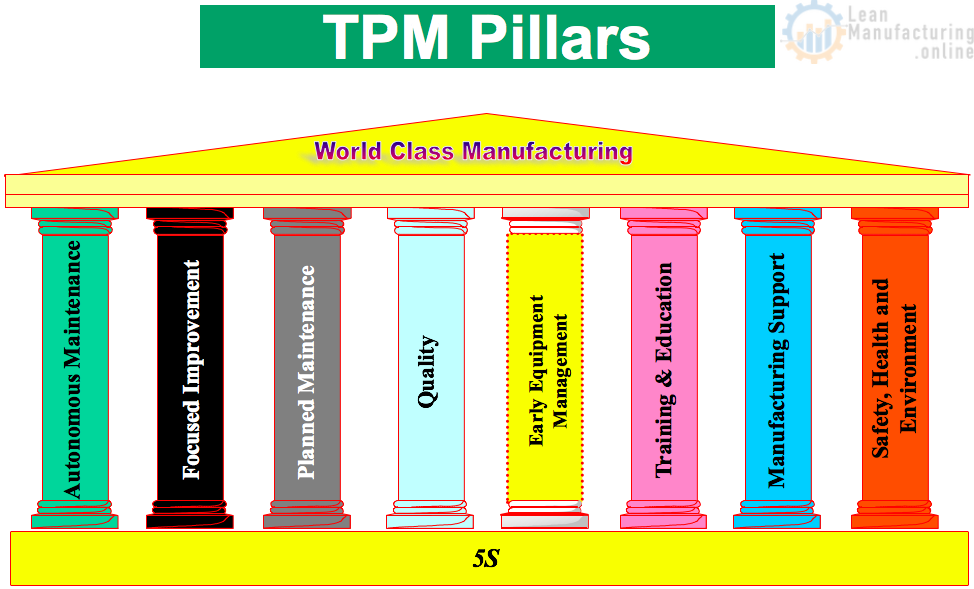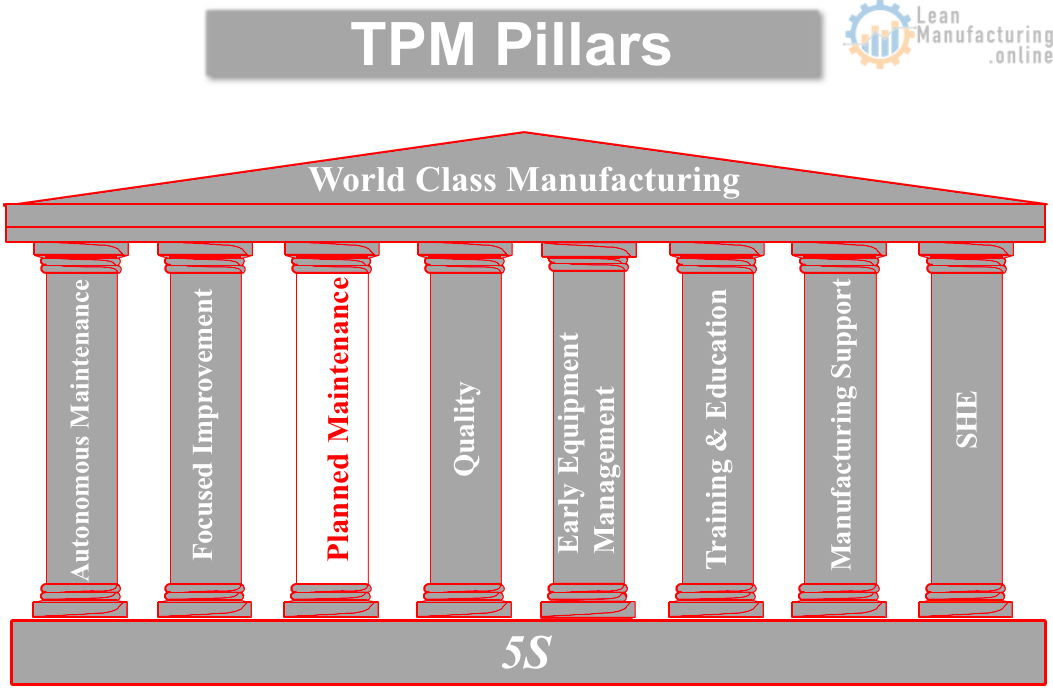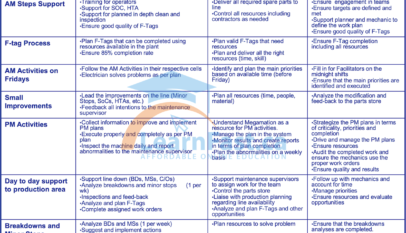Aims
The aim of Step 7 is to consolidate all of the activities undertaken in Steps 1 through 6. By this stage, the operators should have gained real confidence about the changes they have made in the equipment and the workplace, and in their own self-development, and understand the positive results that these changes have produced. The aim of Step 7 is to keep on encouraging them to see improvement as an endless process in which they can and must take the initiative. It should be used as an opportunity to reinforce the sense of participation and solidarity that their team activities will have developed, and allow them to go on exercising their creativity and ingenuity and build up even stronger emotional bonds with their colleagues and a solid sense of commitment to their workplace and the work they do there. They should no longer rely on external inputs but be totally autonomous and independent, drawing on their own resources to drive their actions, and fully capable of making the required contribution to the company’s policy and objectives on their own.
Basic approach
Self-management encompasses daily routine management and policy management; in other words, continuing to develop and expand the disciplines of Autonomous Maintenance and Focused Improvement. To do this, operators must evaluate their own work area against the optimal scenario set for each assessment item on a companywide (or sitewide) basis. They must gauge the level of sustainment, the level of improvement, and the level of results that have been achieved in their area, identify anything that is not good enough, and work on these by building them into an annual or termly improvement plan. They should continually repeat this process in order to keep on raising the standards (see Figures “Basic Approach to Achieving a Self-Managing Workplace” and “Example of Self-Management Level Assessment”)
Implementation
Broadly speaking, Step 7 should be rolled out in accordance with the two basic approaches illustrated in Figure “Example of Self-Management Level Assessment”, namely:
- Establish a system of workplace management that will not break down
- Improve operators’ abilities to fulfill their production role
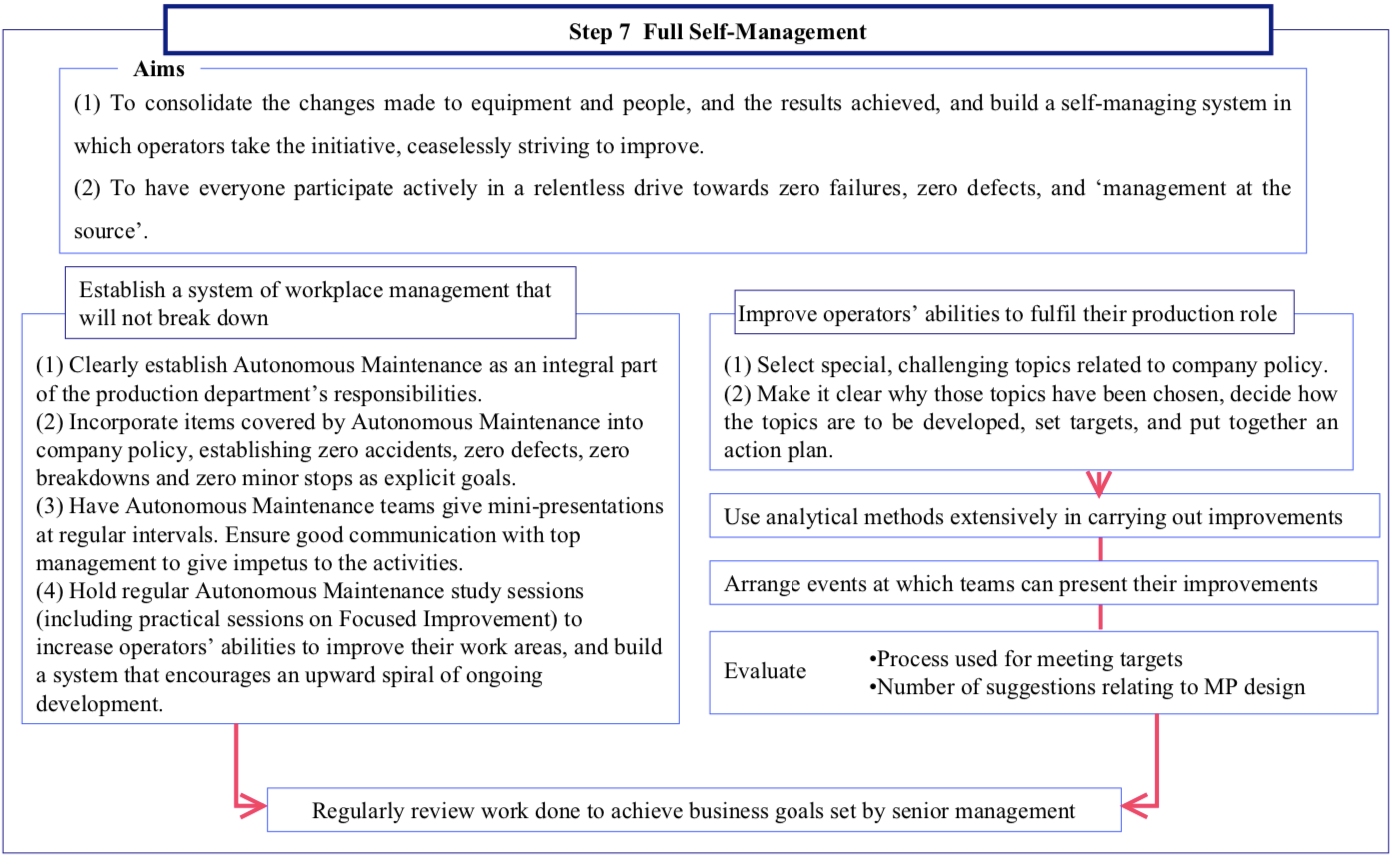
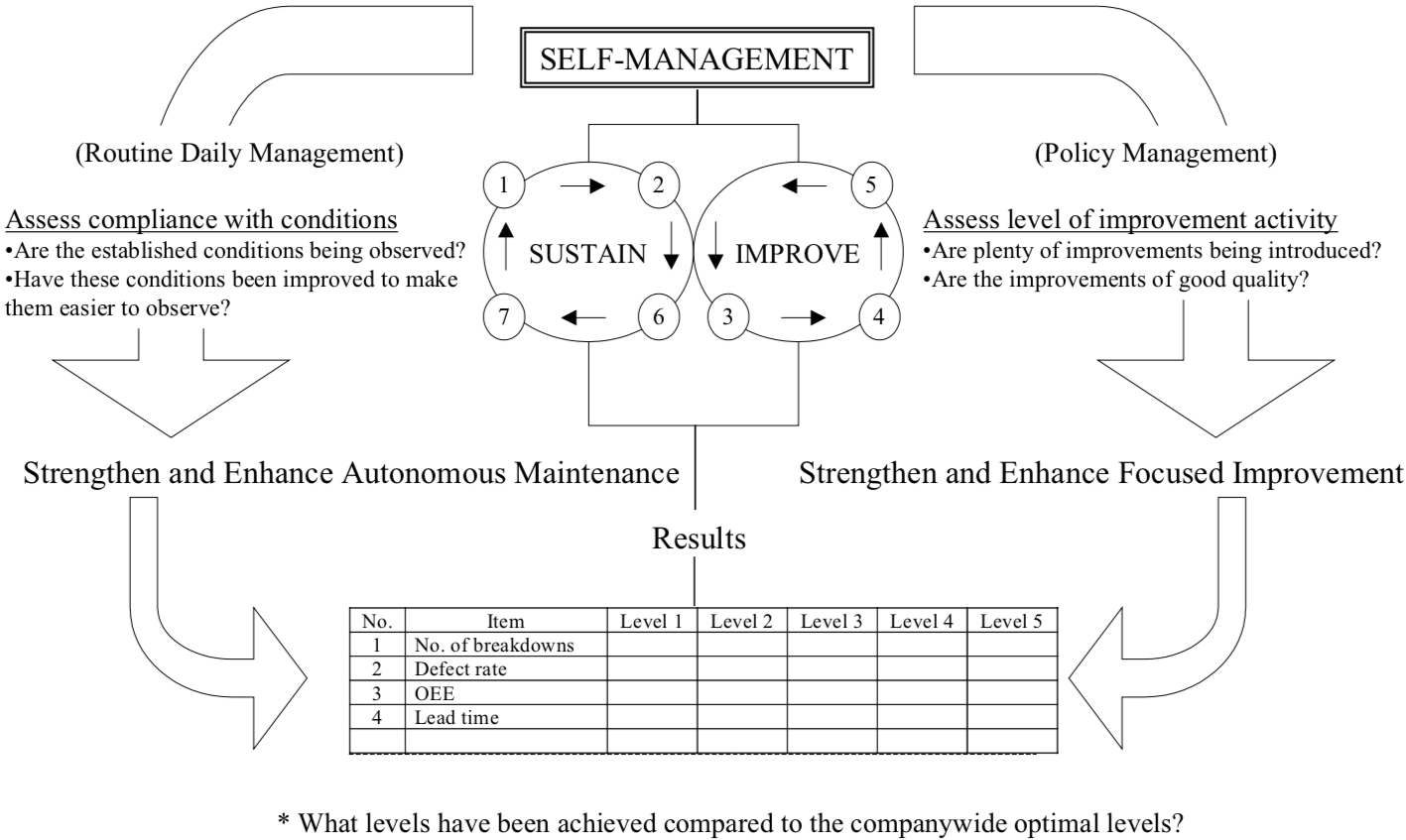

(1) Establish a system of workplace management that will not break down
Quite a few companies have won a TPM Excellence Award, but then, two or three years down the road, have allowed their Autonomous Maintenance program to collapse. Of course, in these cases, the responsibility really lies at the door of senior and middle management. Operators naturally tend to follow the lead set by those above them, so it is absolutely essential that managers demonstrate firm commitment and maintain a constant and active input if the system of workplace self-management developed through Autonomous Maintenance is to continue.
(2) Develop operators’ ability to act on their own initiative
This ability is learned through ongoing, practical teaching sessions, primarily in the form of on-the-job training by managers and supervisors. Managers can help operators build up their self-management capabilities by picking suitable topics from the policies set down by senior management and then supporting activities relating to those topics.
(3) Adopt the right approach to work
If full use is to be made of the available labor resources, it is essential to understand the following basic principles defining the right approach to work:
- Everyone must participate fully.
- They must know how their work is progressing and what results it is producing.
- They must be helped to feel a sense of achievement about what they have accomplished.
- They must be helped to develop into individuals worthy of recognition, and actually be given that recognition.
(4) Set challenging targets
To ensure that everyone keeps on striving for perfection and does not rest on their laurels, challenging targets should be set and continually revised in the light of what has been achieved so far. Targets should suit the position and responsibilities of the team that is supposed to achieve them, and be designed to contribute to the company’s business goals.







